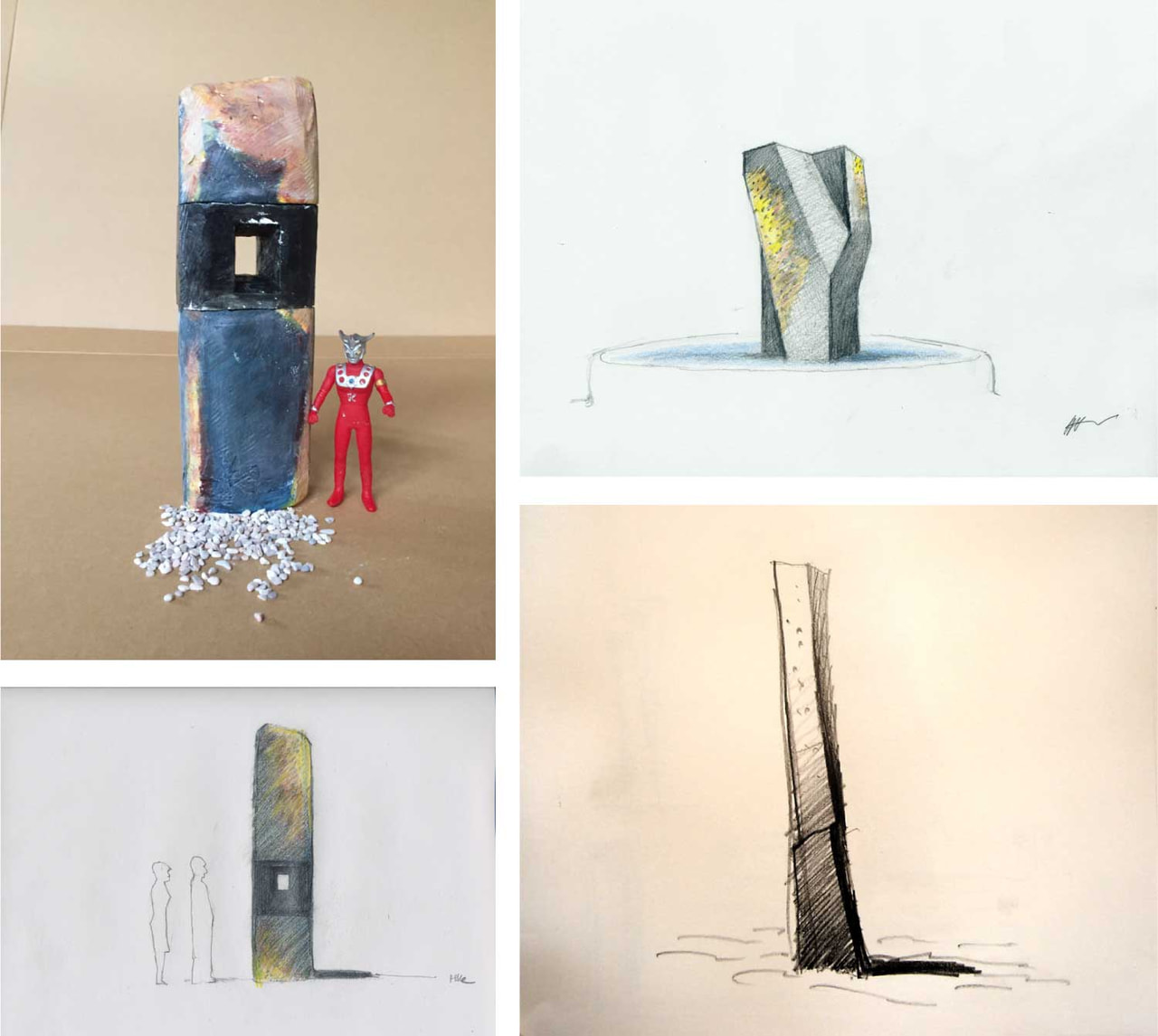Image
Philosophy
Hironori Katagiri
I usually work on monumental projects and commissions for specific sites, from portrait statues and abstract modern symbolic artistic monuments, to environmental art using the whole space of a park.
For each unique site, I try to explore the final resolution of sculptural projects in a style of expression reflecting the time we are living in, incorporating themes of the regional, historic and local characteristic elements, in collaboration or consultation with a broad range of other professionals and the clients themselves.
Sculptural art celebrates humanity by encompassing "eternal beauty" in robust material. So I base my work on simple abstract form in order to stimulate fundamental human imagination. The main theme of my work, such as the 'window' that dramatically dissects the space, is clear sharp form contrasted with organic natural stone shape standing out to create interior and exterior space.
I cut out the inside to maximise the texture of the stone material. Contrasting the rough skin of black granite and basalt (which are particularly strong stones) with gently curved linear surfaces that are precisely finished and highly polished. So the stone appears to become a landscape that transcends time and space to stir the imagination of the viewer. This work proposes to see the world freely with our imagination through our bodies and all five senses.
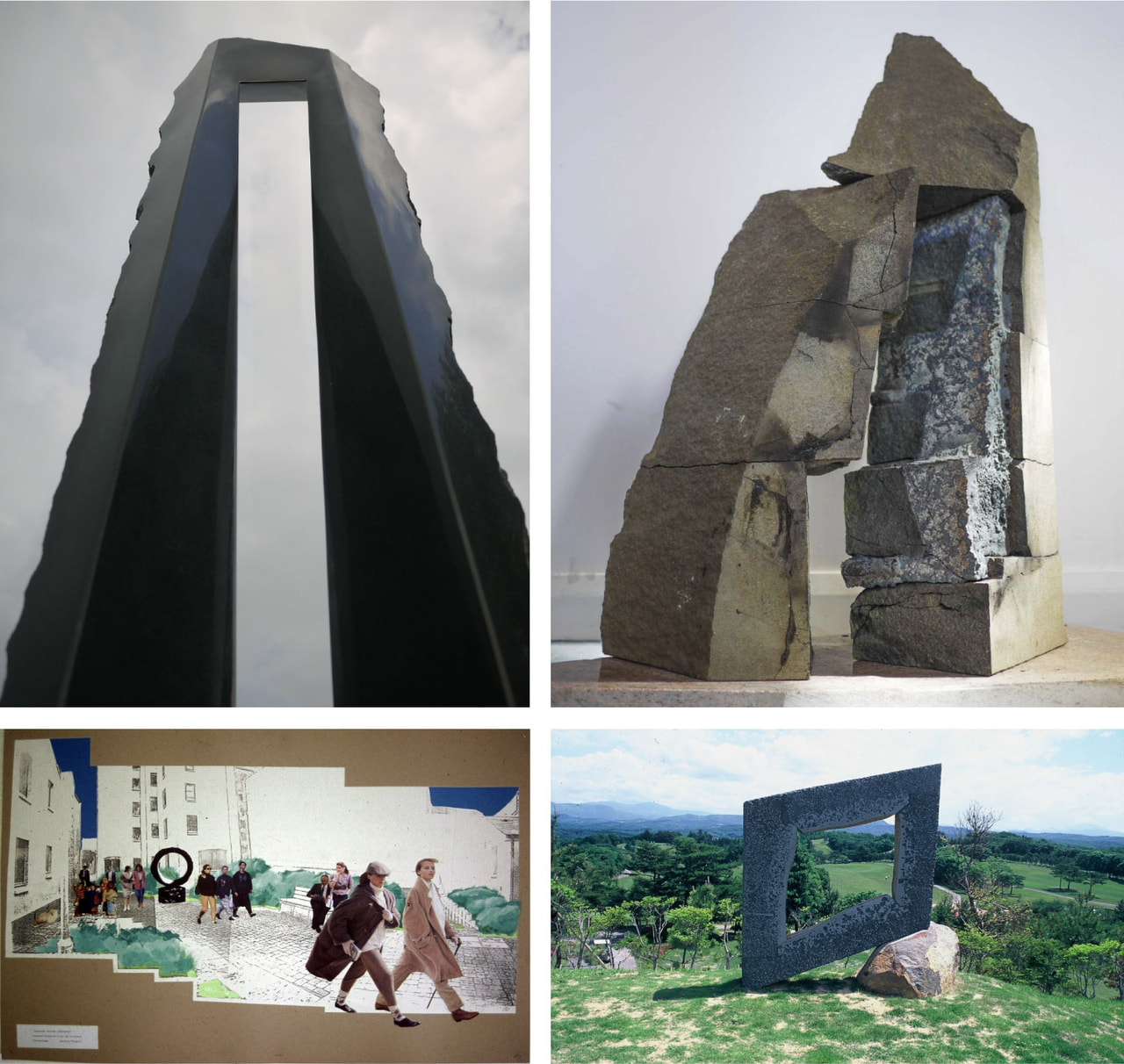
Concept
1."21.march.195", "Nostalgia"
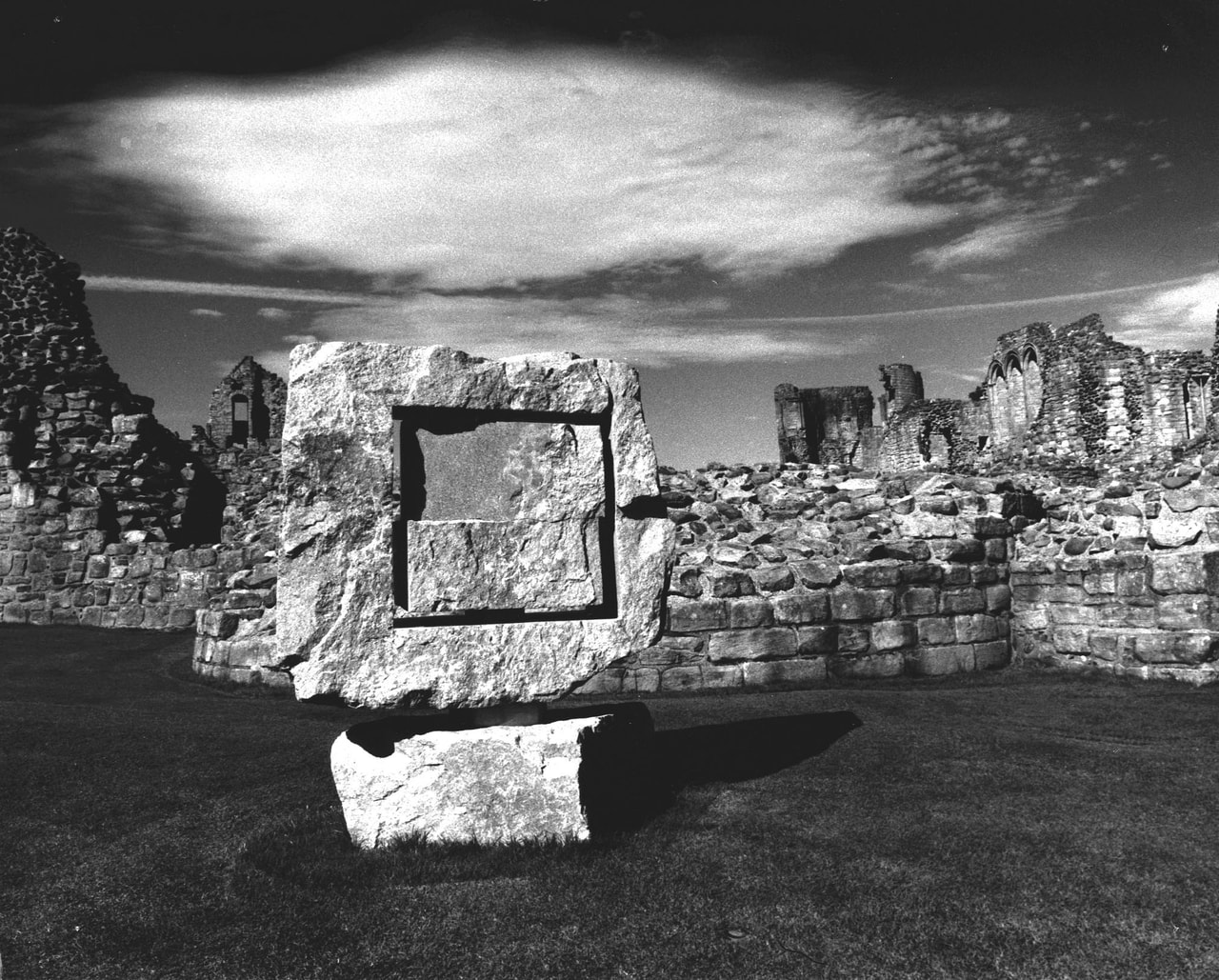
After graduating from university, I worked as Assistant Director at the Lindabrunn International Sculpture Symposium run by Matthias Heitz of Austria. I participated in many experimental public art projects of the International Sculpture Symposium movement in various parts of Europe, mainly in Austria. I also worked in the Scottish country town of Lumsden during the winters when there were no projects in Europe. Based at the Scottish Sculpture Workshop, I focused on my own work. In 1984, the Scottish Sculpture Trust asked me to make a work in their sculpture park, so I made "21st March 1985" for that. However, this work was first shown in an exhibition called "The Scottish Sculpture Open", which toured the UK for several years, instead of entering the sculpture park. It is now at the University of Stirling, standing by the loch. The idea for this work came from the "British Sculpture Show" a large-scale exhibition held in London. While talking over a beer about the exhibition with an Irish sculptor who was based at the same workshop, I was inspired by her description of particularly impressive work to make my own idea for a work in which natural stones are simply split and reassembled. Later I saw this exhibition for myself and the sculpture she had described was completely different from the shape I had imagined when I tried to visualise it. I was disappointed, but at the same time I was relieved.
"Nostalgia" was created when I returned to be an artist in residence in the Scottish Sculpture Workshop as part of the "JAPAN 2001 Festival". This piece literally overlaps the act of reassembling split stones with the nostalgic feelings of returning to the workshop I was so accustomed to before and rekindling friendships with fellow artists. After being exhibited at the Peacock Art Centre in Aberdeen, "Nostalgia" travelled to several places and is now also on show at the University of Stirling.
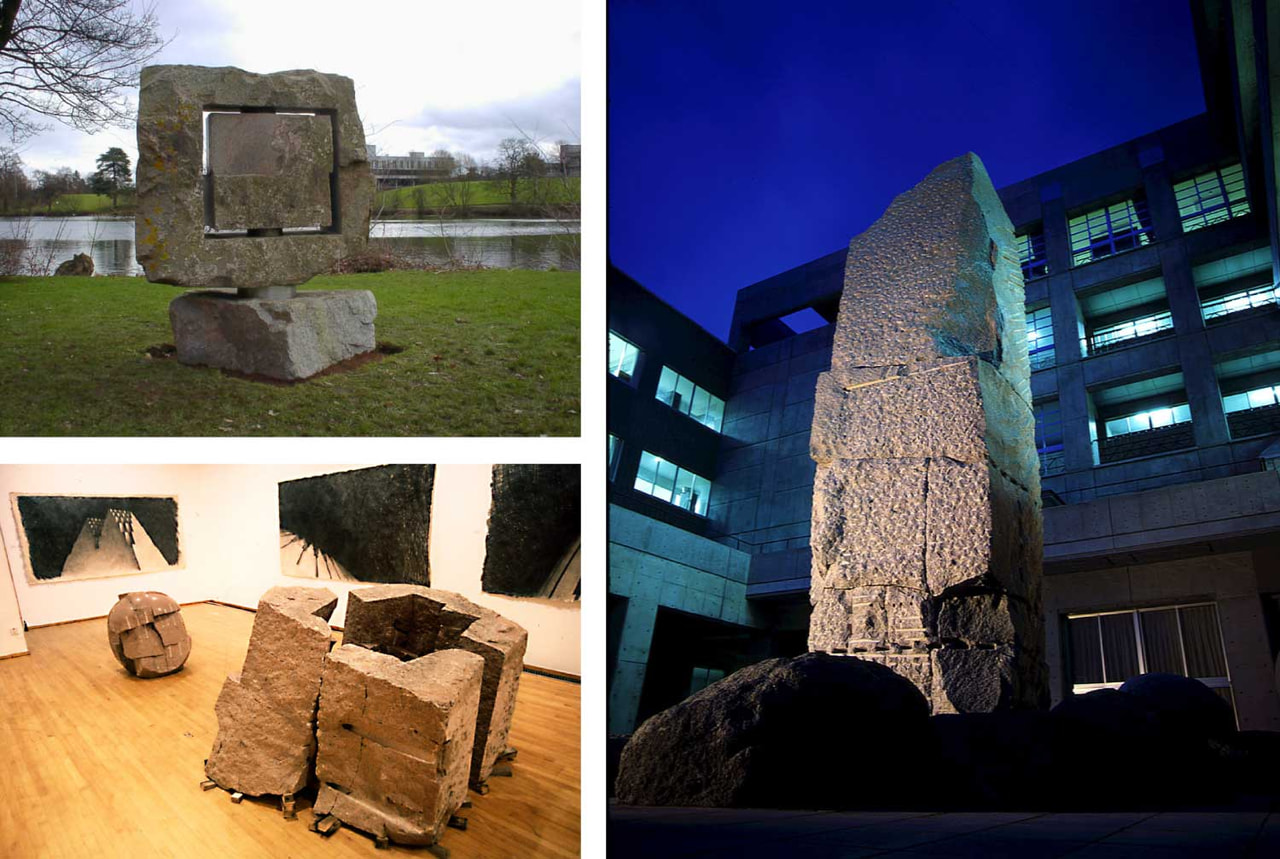
2."Stremline" series
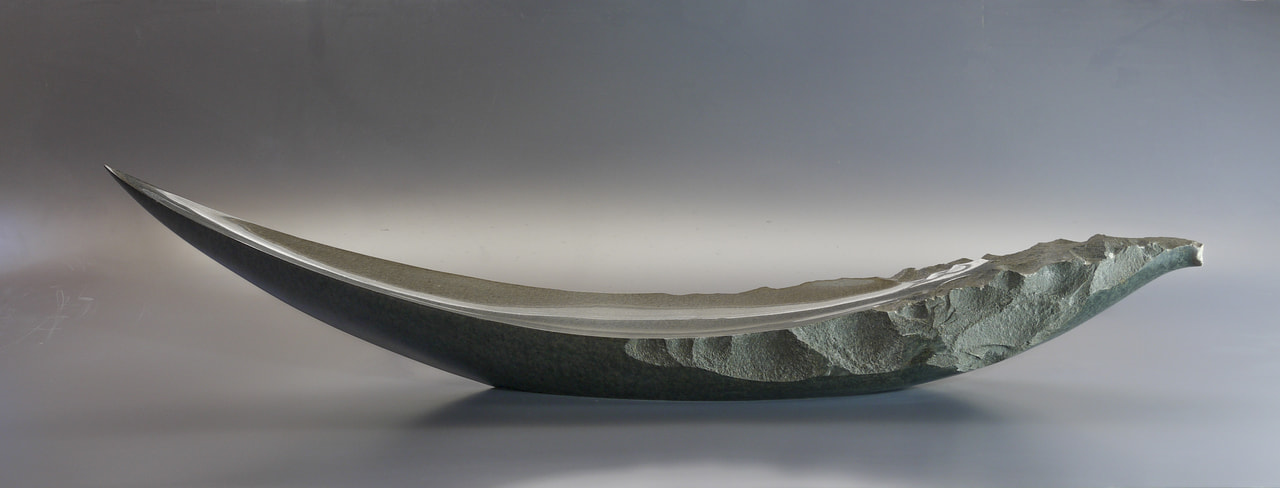
One hour from Glasgow, in the city of Helensburgh on the west coast of Scotland, there is a building called Hill House, which is celebrated as one of architect Charles Rennie Mackintosh's masterpieces. Kate and I had a valuable opportunity to have an exhibition there in 2009. Macintosh tried to incorporate Japanese aesthetics into his work. So I considered the era when was active in the early 1900s, when streamline forms were a mainstream of design. I created my "Streamline" series by combining these ideas of modern aerodynamic design with Japanese cultural context, particularly the simplicity and fluency of ukiyo-e lines. The "Bijin" series is based on the theme of Ukiyo-e Bijin-ga. Also, after participating in a symposium in Lebanon in 2002 with Kate, we had visited Kate's friend in Cairo, Egypt. At that time, of course, I looked around the remains of the pyramids. One artifact that was especially memorable was the " Ship of the Sun" that had just been discovered at the Pyramids of Giza. The excitement of witnessing the miraculous artifacts of 6000 years ago is the source of the idea for my ship series. The ship I saw in Egyptian was used for religious ceremonies, unlike practical ones for general use seen all over the world, and its shape emphasising the tip is uniquely wonderful. I think it was positioned as a special vehicle for the journey from this world to the afterlife. From my own experience of growing up in the port city of Kesennuma, in North East Japan, being familiar with the sea and boats, a boat is a tool for leaving the land to venture onto the ocean. Leaving the real world and pursuing dreams was always very seductive. This sculpture is also titled "Streamline". It cuts the wind with flowing line has a lot to do with the streamlined design that has flourished since the 1920s. The essence of that design movement is using design itself as vehicle which functions to express speed and give a feeling of further acceleration to the world, aiming for the completion of modern society after the Industrial Revolution. The romance of modernism is strongly felt. It is an image of being freed from old customs, eliminating difficulties that stand in our way, and gliding in a new free world. Through this form, I would like to express the romance, and refreshing tension, of pursuing a dream of life, seeking a new world and a new frontier.
On the other hand, the meaning of the historical background of this design movement is also important to us today. The sense of modernism, acceleration, and uplifting will be a precursor to the tragedy of the Great Depression following few years later . The economic breakthrough and spiritual uplifting of our time now may be inevitable for the arrival of a new era of great reset. I think this design movement also implies a later imbalance. If the human mind and society change in a big cycle, visual arts have the potential to foresee the coming era as well as the present era.
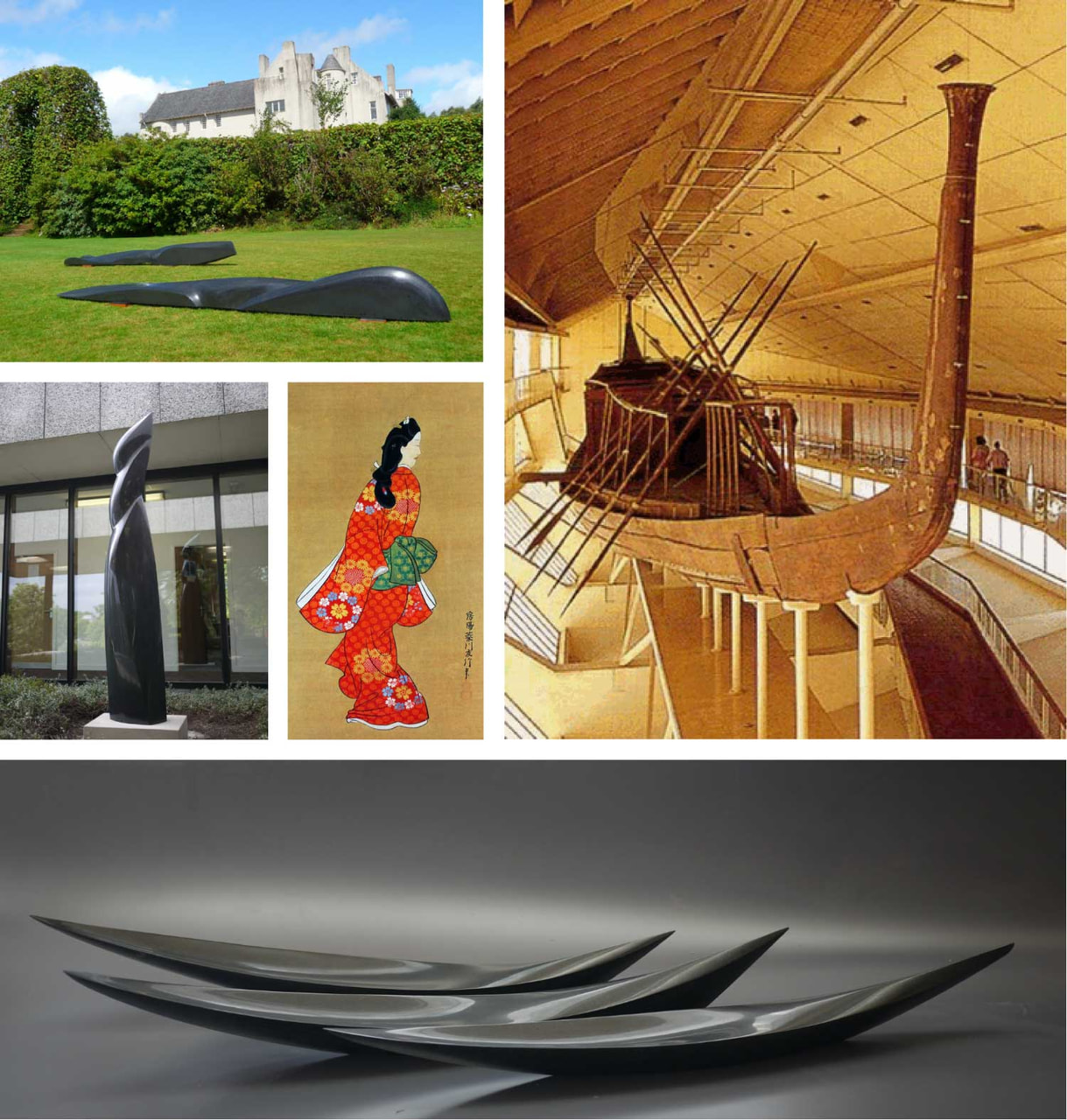
3."Awakening Landscape", "Eclipse"
These 'window' sculptures cut out and frame the current landscape like a picture, showing it with fresh eyes; and, at the same time, longing for a new, distant world. It is also a 'mirror' that reflects oneself. A longing for nostalgic scenery is recalled. There is no representational image in this work. In order to face oneself, and to put together one's feelings, a simple and sharply cut out 'window' can create a strong visual contrast to the rough natural skin of the outer shape, retaining a sense of power. Yet the form also combines stillness giving peace of mind when facing it.
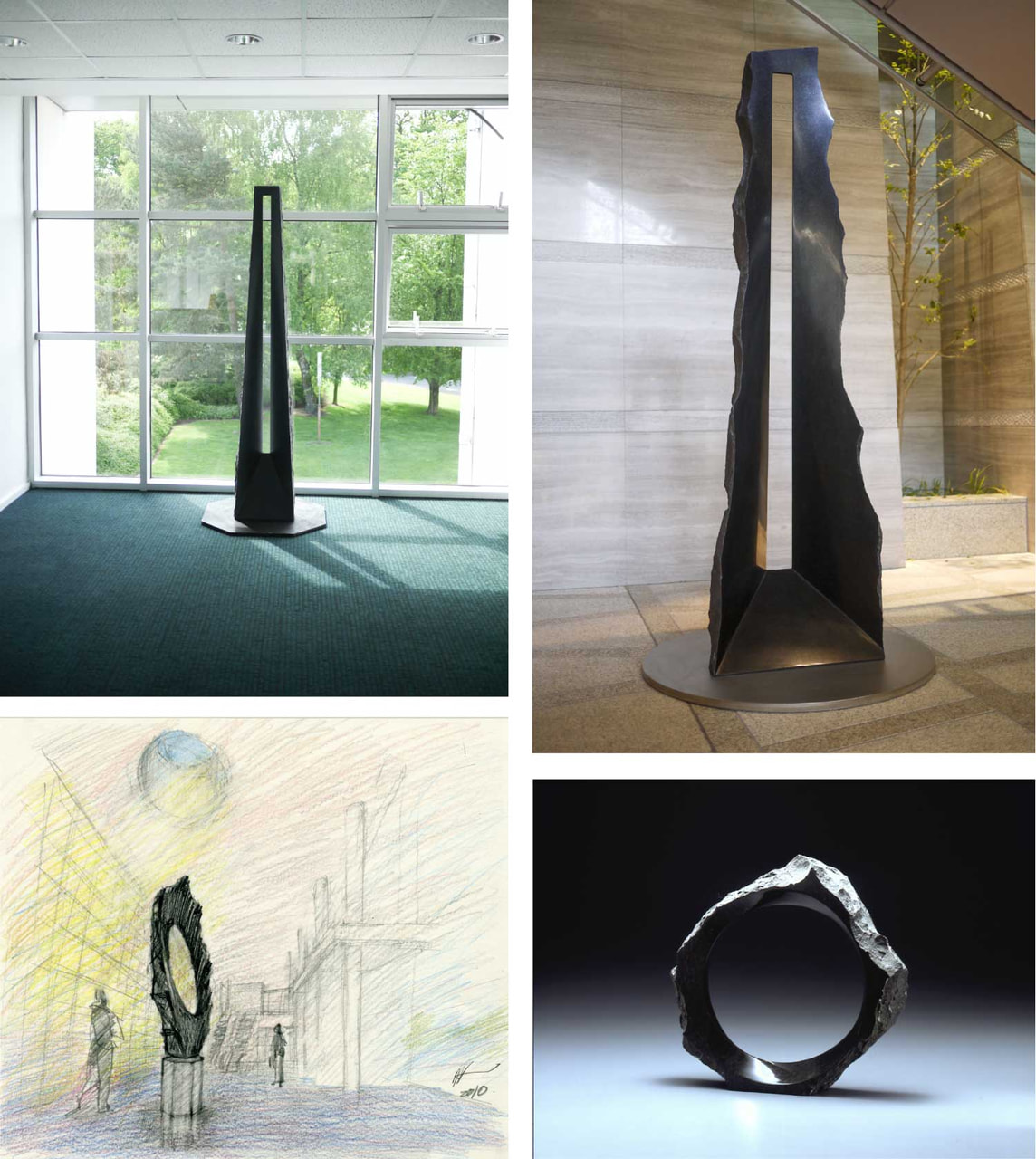
4."Sleeping hearts"
Although "Sleeping Heart" looks like a cube, it is actually sharpened thinly like a knife-edge. It highlights all the different textures and colours of the stone. It is a work that gives the viewer an illusion with a distorted perspective and once again expresses the fun of spatial recognition, as if a huge building or structure suddenly spreads in front of you.
Perspective is one of the core issues in art. The near ones are big and the far ones are small, which is natural. If it is a religious painting, the superiority or inferiority and ranking of the human status depicted there is clearly determined. Realism in the Renaissance professes the beauty of a pure human spirit by drawing as it is, eliminating and liberating human attributes. In old Japanese paintings, there is a reversal of perspective that the interior becomes larger. I draw clouds to make it consistent and deceive. Realism is forever not absolute as long as humans look through the human eye, judge by the brain, and see the world. Perspective is how to draw the world and how to see the world.
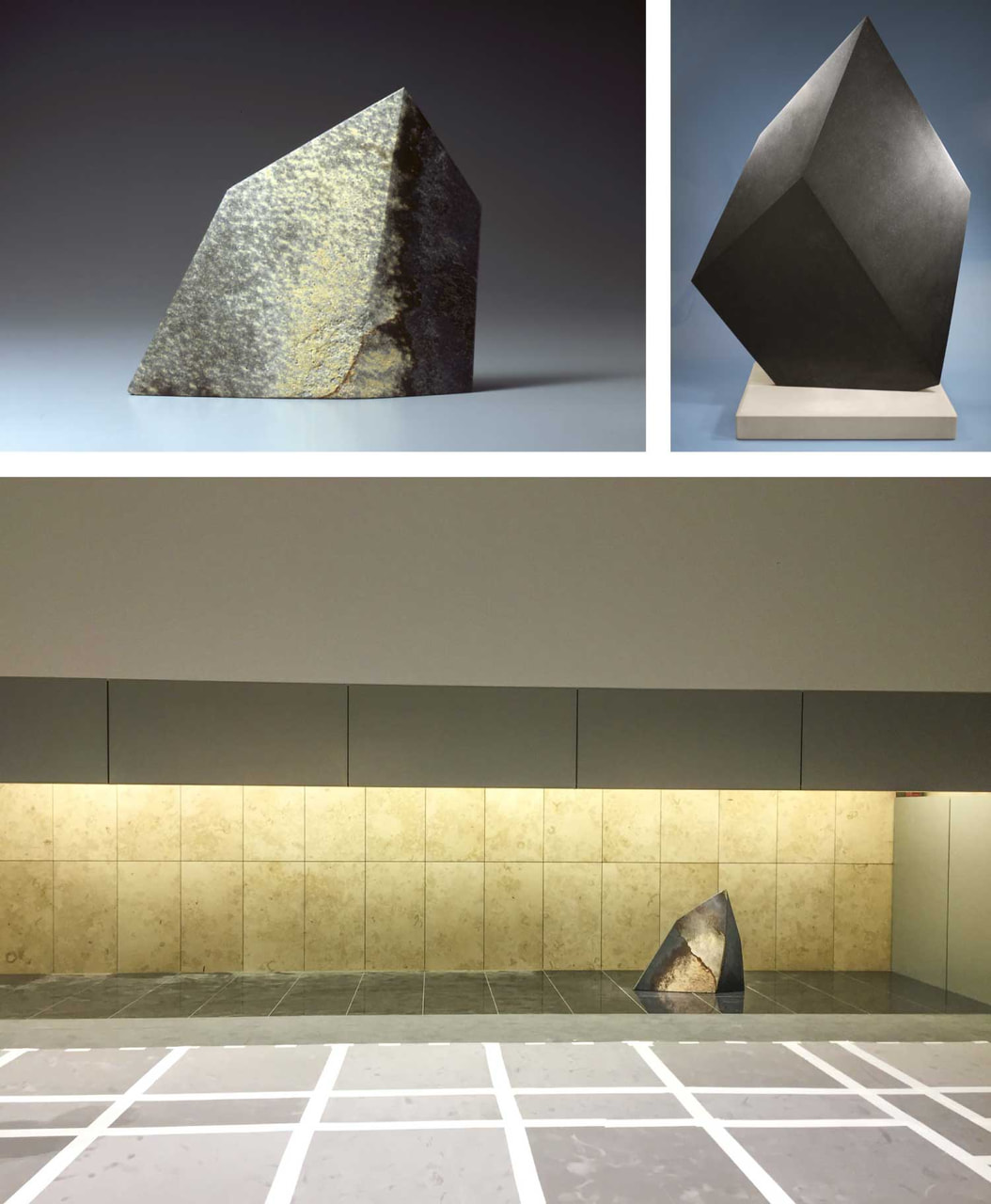
5.About Stone
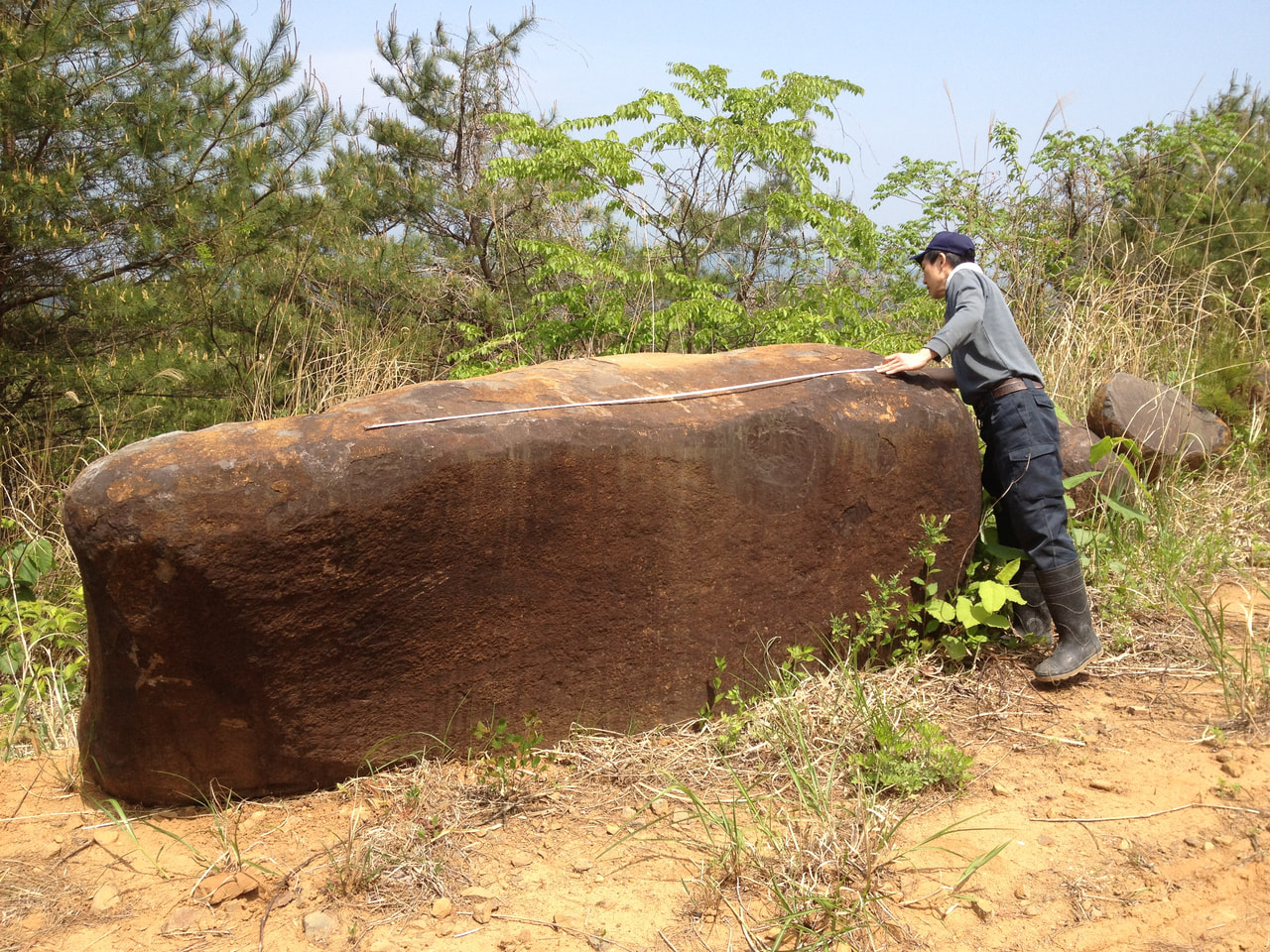
I was longing for Rodin. Since I saw "Rodin Exhibition-60 Years After Death" (1976) at the Seibu Museum of Art, I was in the art club at high school, and I was actively tinkering with clay to make heads and busts. Shortly after the entrance ceremony to University was over, I was invited by Professor Mizuho Tsuchiya to help him create an abstract stainless steel work. After classes I was absorbed in the work until the end of night. At that time Pop and Kinetic art happenings and earthwork were in full swing, and it was a time when art was shifting from "-ism" to -art, so while enjoying working with stainless steel, I was looking for a way to combine the latest technology and images, so I was trying to make a hologram work by collecting materials from the Faculty of Engineering at Tohoku University, which was right next to my university.
I first encountered stone in the summer of my first year at university in an intensive stone-carving lecture. We students, who had never carved stones before, gathered in the studio the day before to prepare for it. First of all, it was full of rusty dust. I/we pull out the bellows and iron flea from the back of the shelf in the laboratory, ignite the coke in a camp mood, reshape and harden the flea, and feel the sparks scatter in the first blacksmithing work in my life. No matter how much you/I/we try, you/I/we can't do anything decent. Mr. Eiichi Yokozawa, a lecturer with a red-faced liquor, suddenly appeared, picked up the tools from our hands, I was impressed and awe-inspired to witness him finish it in the blink of an eye. Carving stone was hard work for us young students, so it was full of pride and fulfilment.
After that, I participated sculpture symposiums in Lake Suwa (1978) and Hagi (1981) with Mr. Yokosawa's introduction, and also helped as an assistant organiser at the Austrian Lindabrunn International Sculpture Symposium (1967-, presided over by Matthias Heitz) for symposiums in various parts of Europe and Scotland. I spent about 10 years producing at the workshop. At that time, a symposium on the theme of collaborative production with landscape was held in Lindabrunn, which was clearly different from other symposiums where you could participate in a vacation mood. There were many playground equipment, bench, and pavement works, but I think that through discussions, the meaning of public art was eventually tried and errored/tested. Dialogue with European artists with strong egos was the best incubator environment to think about the distance between work for/in public space and private production.
Even the ontemporary,.experimental and adventurous attempt on art will be classified as classic as soon as you curve the stone. And because of the durable material of stone, a sculpture symposium projecting artists' modern but egoistic expression,which was the Japanese tradition of style of art since the Meiji era. Stone sculpture parks, which were built in Japan during the bubble era when public monuments were produced one after another, with the fragility of social ideas and the context as a monument Due to its sparseness, the y almost become an graveyard of sculpture with an economic impasse. The ability to attract visitors as the centrepiece of tourism is already doubted, and highly entertaining art is now more and more popular. I think that if the prefix "made by stone" is made prior to the ideas to make sculpture, the context of the work tends to be neglected because of the sense of accomplishment of physical labour and magical power of curving stone. .. However, since it applies to all modern sculptures that deal with what kind of material, has the autonomy and social monument of the sculpture become incompatible? Or has the social function of contemporary art been limited? I think it's better to have a work that results in "stones" rather than "made from stones".
(From "Photobook of Outdoor Sculptures of Japanese Stones" by Kanryu Fujita, published by Hon no Izumisha in 2008, contributed)
